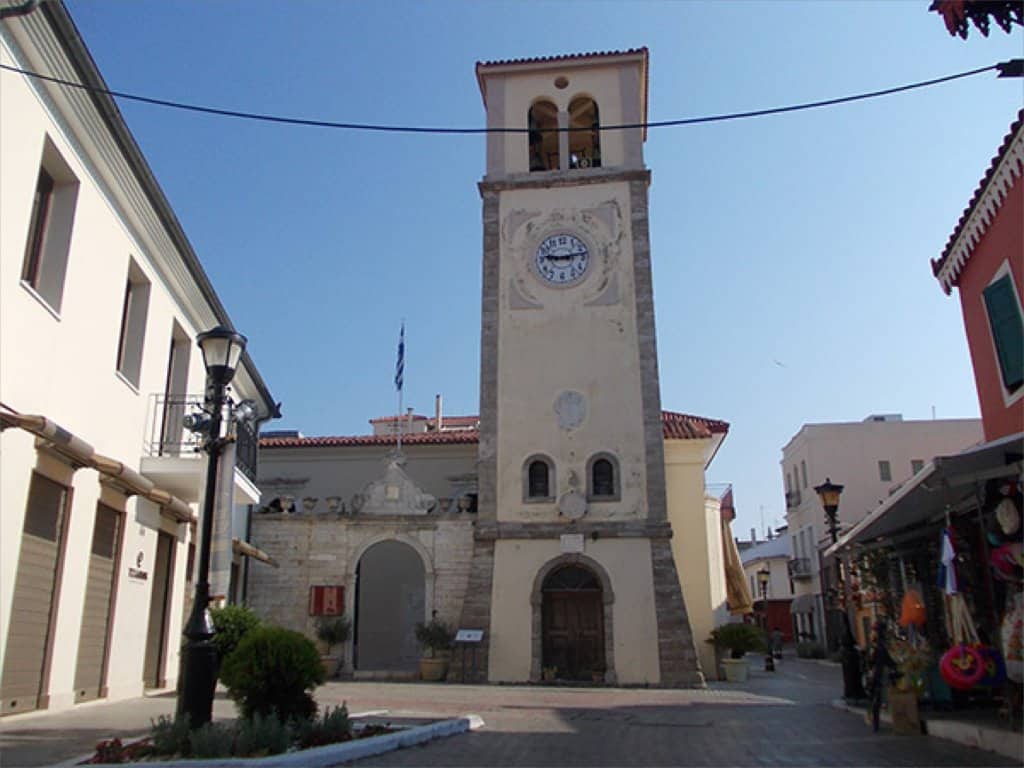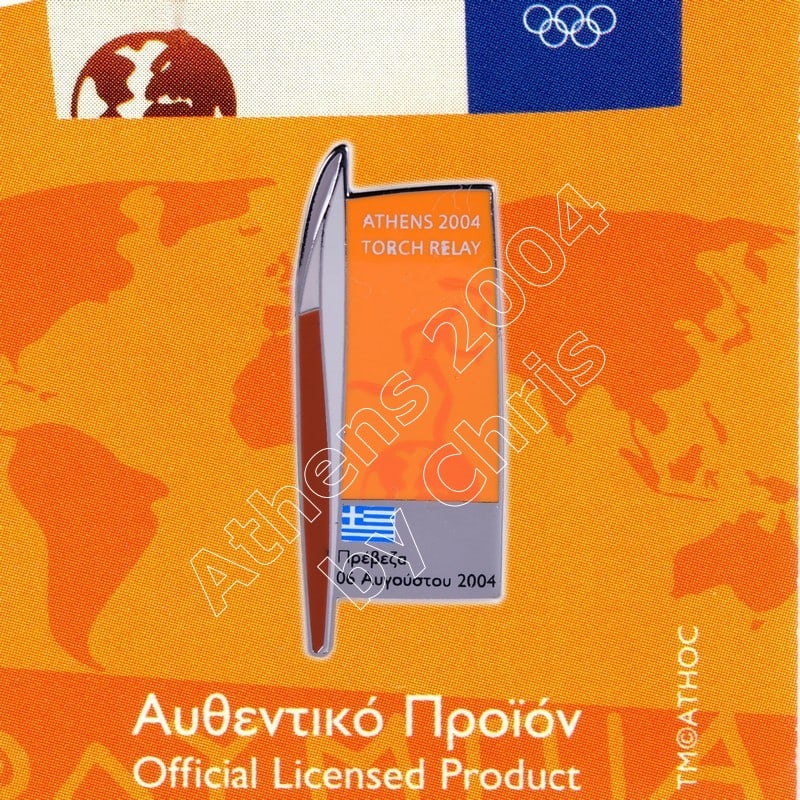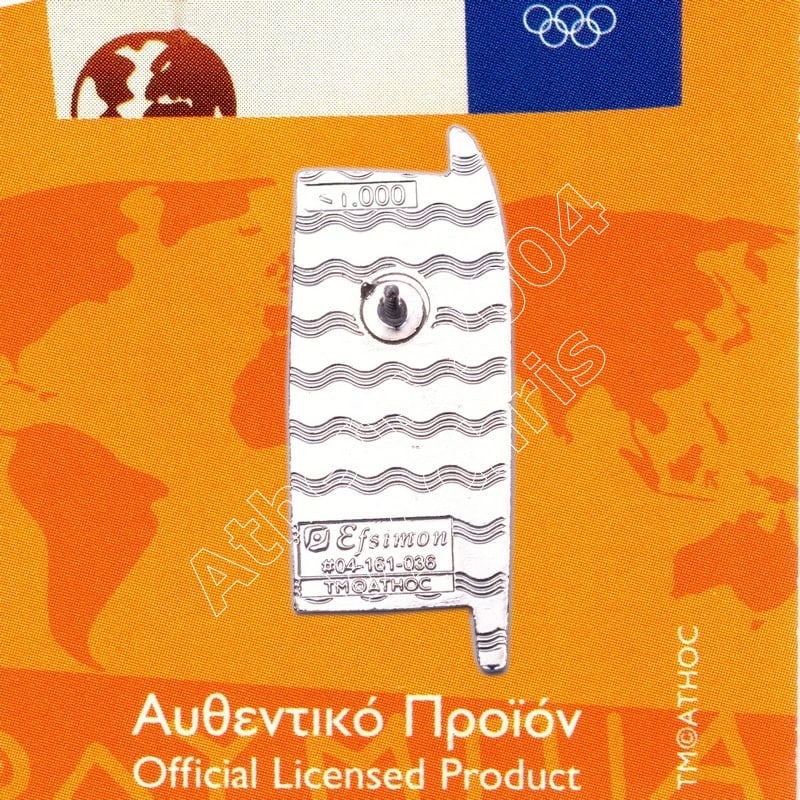Description
Preveza – Torch Relay Greek Route Overnight Stay
Athens 2004 Olympic Games Pin
The Olympic Flame stay overnight in Greek City Preveza at 6 August 2004
The 2004 Summer Olympics Torch Relay took the Olympic Flame across every habitable continent, returning to Athens, Greece. Every citywhich had hosted the Summer Olympics was revisited by the torch, as well as several other cities chosen for their international importance.
The relay was the first time the Olympic flame had travelled to Africa, India and South America. The flame was transported from country to country aboard a specially-equipped Boeing 747 leased from Atlanta Icelandic (Registration TF-ARO) called Zeus. On board the flame was carried and burned continuously in specially modified miners lamps.
Preveza is a town in the region of Epirus, northwestern Greece, located at the mouth of the Ambracian Gulf. It is the capital of the regional unit of Preveza, which is part of the region of Epirus. The Aktio-Preveza Immersed Tunnel, the first and so far only undersea tunnel in Greece, was completed in 2002 and connects Preveza to Aktio in western Acarnania in the region of Aetolia-Acarnania. The ruins of the ancient city of Nicopolis lie 7 kilometres (4 miles) north of the city.
The visitor to the city of Preveza can stroll through the alleys of the historical centre with their architectural diversity, which constitutes a heritage of the city’s history over the centuries and bears the imprint of the various conquerors whose influence is apparent: narrow streets of another age, nineteenth century mansions with their remarkable architecture along with houses with insular features. The cobbled alley of Seitan Bazaar with its traditional “ouzeri” (ouzo serving places) is a famous area in the town. During the Turkish occupation, the inhabitants of the area would smear the alleyway with whatever fat they had so that the Turkish soldiers patrolling in their iron-nailed shoes would fall down. One Turkish officer who fell victim to the inhabitants’ trick shouted “Seitan Bazaar!” which means “Devil’s Bazaar!”, hence the name of the alley.
Preveza is adorned with significant Christian temples, such as the churches of Agios Nikolaos and Agios Athanasios, as well as the metropolitan temple of Agios Charalambos with its exceptional paintings and the wooden carved gold-plated iconostasis. Adjacent to the church is the venetian Clock Tower, a landmark of the city, built in 1752.
Along the paved harbour, which affords a view of the Ambracian Gulf, and in the nearby narrow alleys there are excellent traditional tavernas and ouzeris where the visitor can enjoy the local specialties and fresh fish, or simply have a coffee at one of the many tasteful cafes along the waterfront.
As for swimming, one can go on foot to Kyani Akti, the beach with tall shading trees located within the city of Preveza and below the Agios Georgios Castle, or drive some kilometers further to the incredible Monolithi beach which is alongside a lush green forest. A short distance from the city of Preveza is also the beach of Alonaki, not far from Pantokratoras Castle where cultural events are held in summer. The beaches of the area are ideal places for surfing or sailing, water skiing, sea parapenting, boat hiring, and fishing. Furthermore, there are facilities for tennis, basketball, volleyball and other sports as well as entertainment centres. Hotels, rooms to rent of all classes and camping grounds offer the visitor the opportunity to enjoy comfortable service and accommodation.
For those who have a passion for history and antiquity, Preveza offers the unique experience of a tour within Ancient Nicopolis with its basilicas, the famous mosaics which attest to the grandour of a glorious city that thrived up to the tenth/eleventh century, the ancient theatre, the well-preserved stadium and the Monument of Augustus, while the new Archaeological Museum of Nicopolis hosts a fascinating treasure of archeological finds. Other monuments of the city worth mentioning are, among others, the venetian fort of Agios Andreas (eighteenth century), and the castles of Agios Georgios and Pantocratoras, as well as the Vrysoula rampart, which were built in 1807 by Ali Pasha.
The pin depicts the Torch in Preveza where stay overnight
Product: Olympic Pin
Pin code: #04-161-036
Tiraz: <1.000pcs
Official Licensed Product
Licensed Manufacturer: Efsimon Collection






Reviews
There are no reviews yet.